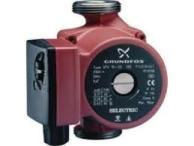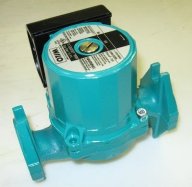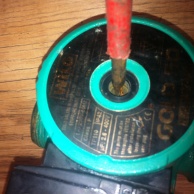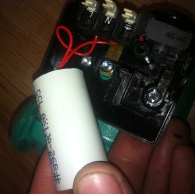Dangers
- Electrocution
- Flood
- Scalding
- Burns
- Large flat blade screwdriver
- Cross head screwdriver
- Small flat blade screwdriver
- Multimeter If in doubt call a proffessional!!
Tools needed
Help Forum
Central heating pump diagnosis
READ THE DANGERS SECTION
The idea of this is so you get an idea of your system, so you know if your engineer is doing his job correctly, if you attempt a repair yourself,be carefull

So this is a pump, the main makers are Grunfos, Alpha and Wilo.
There are several colours,
Red is Grunfos
Blue is british gas - actualy wilo
Green is Wilo
silver is usualy badged with boiler makers name - Usualy Grundfos make these
The pump will often be located by the boiler, in the boiler or by the cylinder.
The pumps sole function is to circulate water around the heating system.

Ok, why are you her? Are you sure your pump is dead, are you checking if its dead, or is it just behaving strangely?
Start initialy by tentatively touching the body of the pump. As a rule of thumb, Cold means no power, warm/hot is ok, very hot means seized or running dry. A correctly running pump will have a slight vibration.
STEP 1, Power to pump OFF

Firstly, there is a caution to this - A seized pump will be full of scalding steam, be careful!. So, Get a cloth, wet it with cold water and then wring it out so its damp, not wet. Then, With a Large flat bladed screwdriver, (or a 20p peice in a pair of pliers) loosen the silver screw in the center 1/2 a turn. a slight hiss of escaping air should be heard, and water should drip from the screw. This water most likely will be black, dirty, and hot.(this is what the cloth is for) Do not loosen the screw too far or it will fall out, most likely dropping under the floorboards!
Anyway, assuming the water escaping is cool enough, remove the silver screw and set it aside. loose it and your in trouble. Inside the body of the pump you will see the end of a small shaft with a diagonal slot in it - place a small screwdriver in the slot and rotate it. it should turn freely. If it doesnt, apply some pressure, to see if you can break it free. Be careful not to strain the pipework around the pump, and support the pump from behind with your hand if neccessary.
If the force you can apply through a small screwdriver is not enough to free it, game over. see How to replace my central heating pump
Assuming it now turns freely, lets move on.
STEP 2, power to pump on

Ok, now assuming the loss of water from the pump screw is manageable, flick the power on to the pump. You should see it spin. if its hard to see, carefully poke a small screwdriver in the hole, and you should not be able to stop it without some considerable force. If its spinning well, but your system isnt functioning, the answer is either Air in the system or the impellor has fallen off your pump. A pump with air in it will usualy run hot, make a slight howling graunching noise, a pump with no impellor will run cool, but fast, and the shaft will continue to rotate for several seconds after the power has been switched off.
Assuming we have a free turning shaft but its still not spinning, put the silver screw back in and lets move on.
STEP 3, Power to pump OFF

Unscrew the pozidrive screw on the top of the control box and carefully remove the cap. Inside you will find a white cylinder, a small control rod and several wiring connections. Initialy test that there is actualy 240v ac at the incomming supply wiring. (note - anything under 200V AC, most likely means a broken neutral wire - usualy 150v is typical)
Isolate the power again and carefully lift out the white cylinder - being carefull of the wiring, and inspect it - you are looking for bulges in the casing, splits and cracks and/or leaking of a sticky brownish fluid. Any of these means the capacitor is dead. A new one can be sourced from rs-components.com, for a few pounds. read the specifications from the side of the defunct unit.
If there is no evidence of an issue with the capacitor, give the control box a sniff. A nasty, electronic burning smell, puts you back to How to replace my central heating pump If there is no smell, and the capacitor looks ok, the shaft spins freely, 240v is present at the supply wires...... its still How to replace my central heating pump
Pump Notes
- A seized pump has seized for a reason. listen for air rushing round the system, or black water
- A 'tickling/hissing' sound is debris in the system rubbing against the impellor
- An undulating groaning sound is air in the system or a half empty system
- Often low system pressure will cause pump issues.
